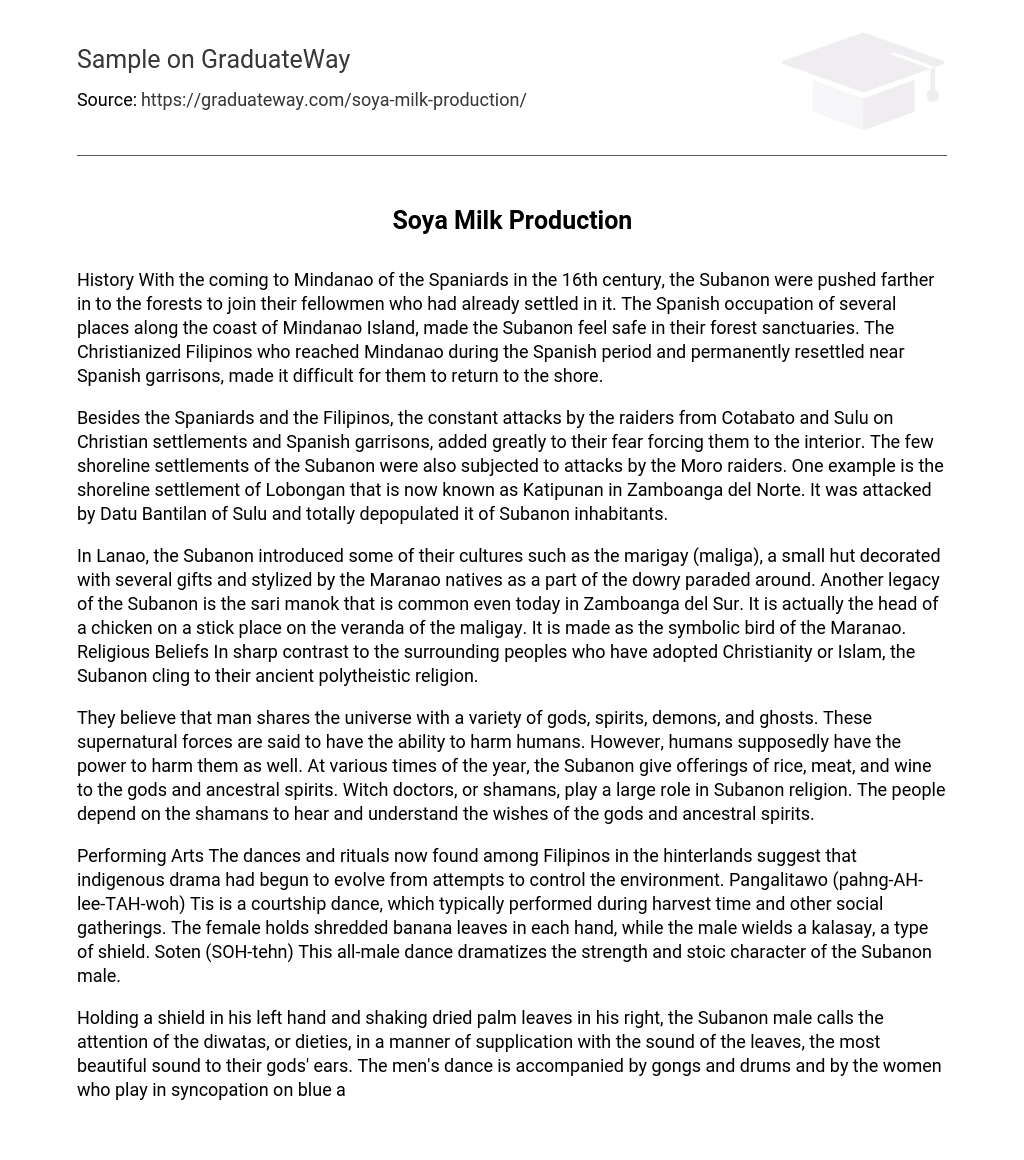History With the coming to Mindanao of the Spaniards in the 16th century, the Subanon were pushed farther in to the forests to join their fellowmen who had already settled in it. The Spanish occupation of several places along the coast of Mindanao Island, made the Subanon feel safe in their forest sanctuaries. The Christianized Filipinos who reached Mindanao during the Spanish period and permanently resettled near Spanish garrisons, made it difficult for them to return to the shore.
Besides the Spaniards and the Filipinos, the constant attacks by the raiders from Cotabato and Sulu on Christian settlements and Spanish garrisons, added greatly to their fear forcing them to the interior. The few shoreline settlements of the Subanon were also subjected to attacks by the Moro raiders. One example is the shoreline settlement of Lobongan that is now known as Katipunan in Zamboanga del Norte. It was attacked by Datu Bantilan of Sulu and totally depopulated it of Subanon inhabitants.
In Lanao, the Subanon introduced some of their cultures such as the marigay (maliga), a small hut decorated with several gifts and stylized by the Maranao natives as a part of the dowry paraded around. Another legacy of the Subanon is the sari manok that is common even today in Zamboanga del Sur. It is actually the head of a chicken on a stick place on the veranda of the maligay. It is made as the symbolic bird of the Maranao. Religious Beliefs In sharp contrast to the surrounding peoples who have adopted Christianity or Islam, the Subanon cling to their ancient polytheistic religion.
They believe that man shares the universe with a variety of gods, spirits, demons, and ghosts. These supernatural forces are said to have the ability to harm humans. However, humans supposedly have the power to harm them as well. At various times of the year, the Subanon give offerings of rice, meat, and wine to the gods and ancestral spirits. Witch doctors, or shamans, play a large role in Subanon religion. The people depend on the shamans to hear and understand the wishes of the gods and ancestral spirits.
Performing Arts The dances and rituals now found among Filipinos in the hinterlands suggest that indigenous drama had begun to evolve from attempts to control the environment. Pangalitawo (pahng-AH-lee-TAH-woh) Tis is a courtship dance, which typically performed during harvest time and other social gatherings. The female holds shredded banana leaves in each hand, while the male wields a kalasay, a type of shield. Soten (SOH-tehn) This all-male dance dramatizes the strength and stoic character of the Subanon male.
Holding a shield in his left hand and shaking dried palm leaves in his right, the Subanon male calls the attention of the diwatas, or dieties, in a manner of supplication with the sound of the leaves, the most beautiful sound to their gods’ ears. The men’s dance is accompanied by gongs and drums and by the women who play in syncopation on blue and white Ming dynasty bowls, exhibiting the Subanon’s trade relationship with China and the rest of Southeast Asia. Dumadel (dooh-mah-DEHL) A festival dance performed by the Subanons with palaspas (fronds of the buri plant) to celebrate a good harvest





